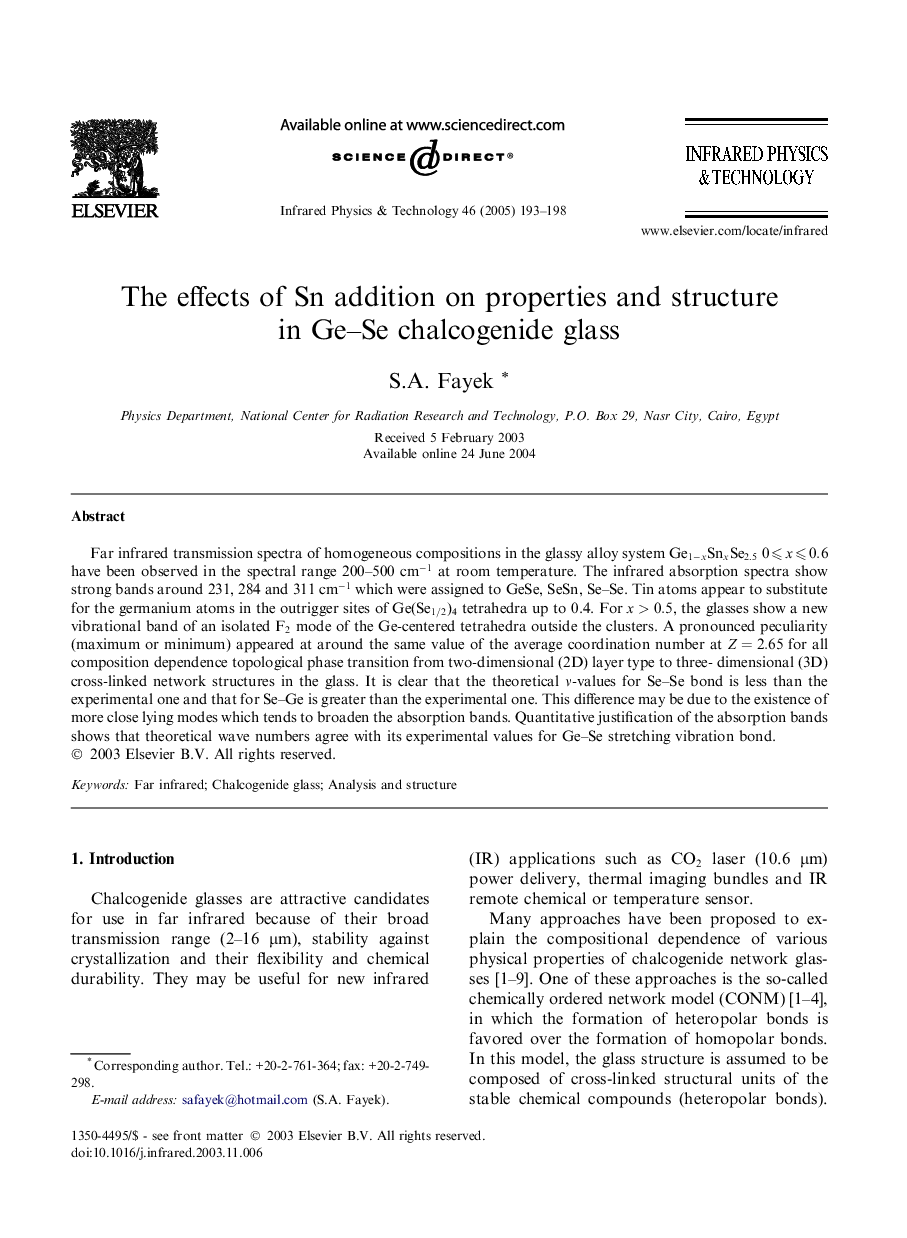| Article ID | Journal | Published Year | Pages | File Type |
|---|---|---|---|---|
| 10706032 | Infrared Physics & Technology | 2005 | 6 Pages |
Abstract
Far infrared transmission spectra of homogeneous compositions in the glassy alloy system Ge1âxSnxSe2.5 0⩽x⩽0.6 have been observed in the spectral range 200-500 cmâ1 at room temperature. The infrared absorption spectra show strong bands around 231, 284 and 311 cmâ1 which were assigned to GeSe, SeSn, Se-Se. Tin atoms appear to substitute for the germanium atoms in the outrigger sites of Ge(Se1/2)4 tetrahedra up to 0.4. For x>0.5, the glasses show a new vibrational band of an isolated F2 mode of the Ge-centered tetrahedra outside the clusters. A pronounced peculiarity (maximum or minimum) appeared at around the same value of the average coordination number at Z=2.65 for all composition dependence topological phase transition from two-dimensional (2D) layer type to three- dimensional (3D) cross-linked network structures in the glass. It is clear that the theoretical ν-values for Se-Se bond is less than the experimental one and that for Se-Ge is greater than the experimental one. This difference may be due to the existence of more close lying modes which tends to broaden the absorption bands. Quantitative justification of the absorption bands shows that theoretical wave numbers agree with its experimental values for Ge-Se stretching vibration bond.
Keywords
Related Topics
Physical Sciences and Engineering
Physics and Astronomy
Atomic and Molecular Physics, and Optics
Authors
S.A. Fayek,
